#bigleaf hydrangea
Explore tagged Tumblr posts
Text

There's beauty in the details
#nature#photography#nature photography#flowers#floral#summer#summer flowers#pink flowers#bigleaf hydrangea#hydrangeas
315 notes
·
View notes
Text
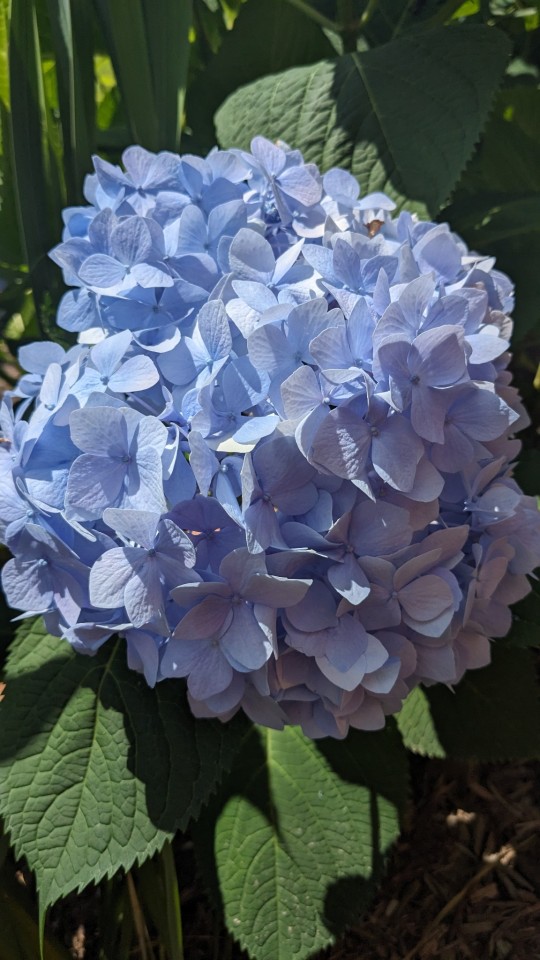
Hydrangea macrophylla / Bigleaf Hydrangea
#Hydrangea macrophylla#Hydrangea#Hydrangeaceae#Bigleaf Hydrangea#French hydrangea#Hortensia#Penny Mac#Plants#Flowers#nature photography#photography#photographers on tumblr#Durham#Durham NC#North Carolina#Home#🌺🌻
10 notes
·
View notes
Text

Hydrangea macrophylla — bigleaf hydrangea a.k.a. French hydrangea a.k.a. lacecap hydrangea a.k.a. mophead hydrangea a.k.a. penny mac a.k.a. hortensia
3 notes
·
View notes
Text
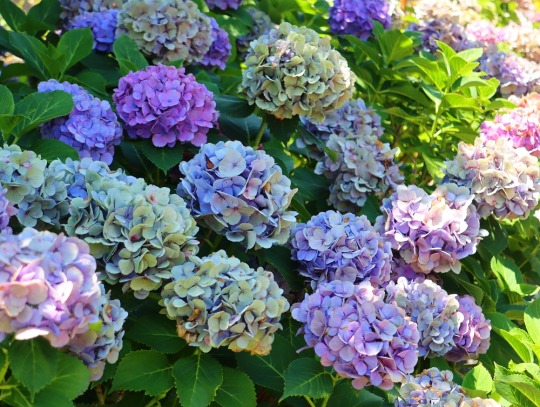
色褪せたアジサイも風情がある(7月2日)
#Hydrangea macrophylla#hydrangea#hortensja#hortensja ogrodowa#bigleaf hydrangea#flowers#kwiaty#japan
10 notes
·
View notes
Text
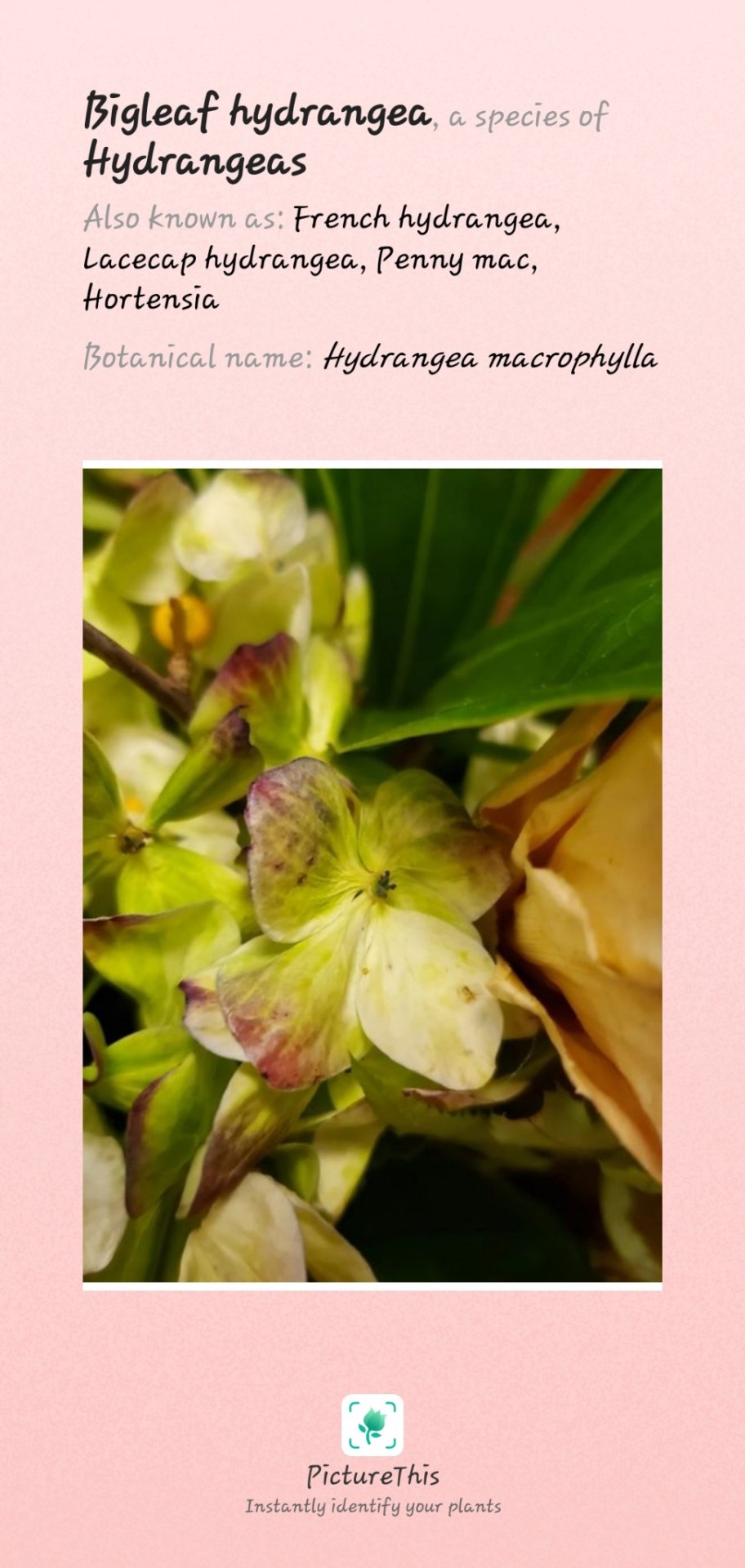
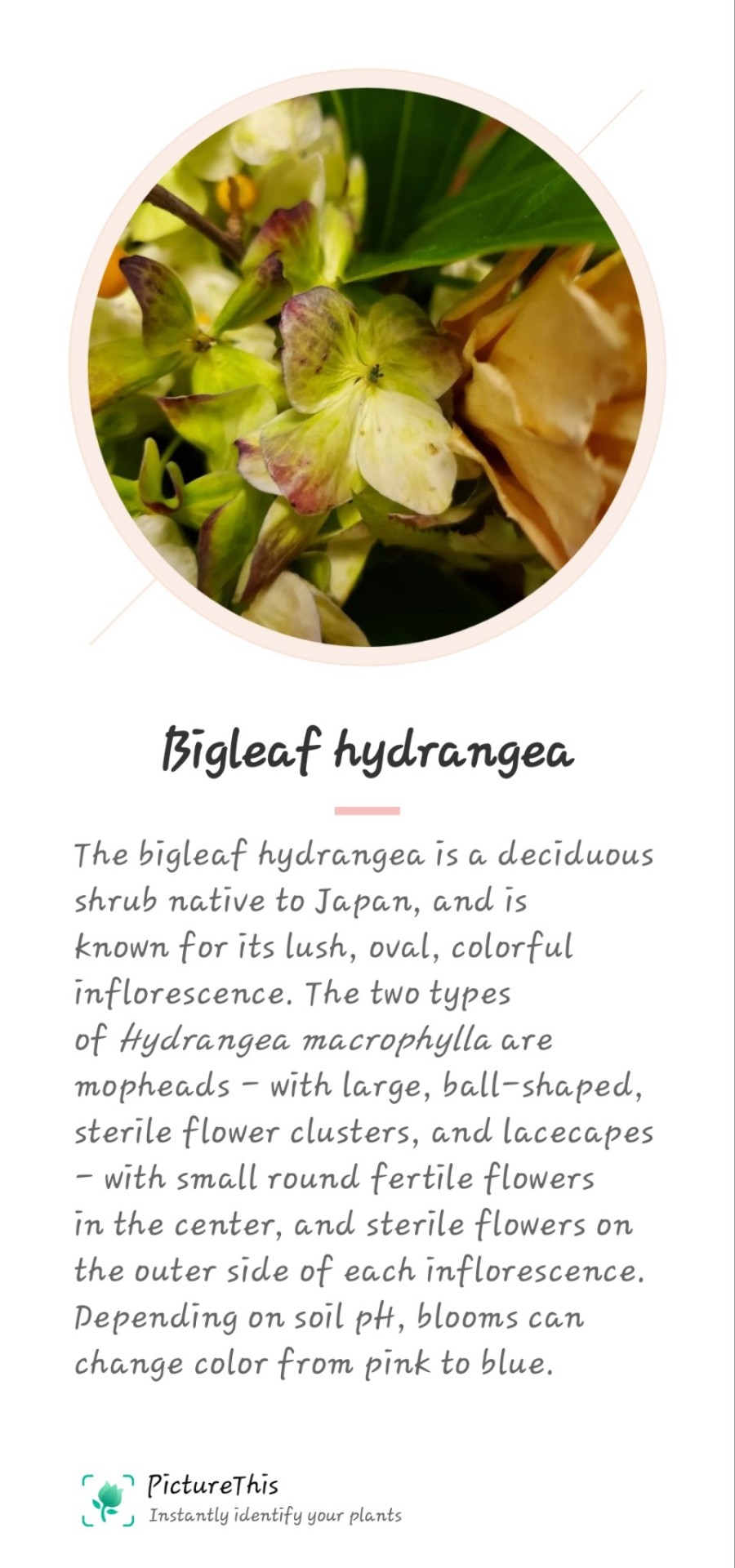
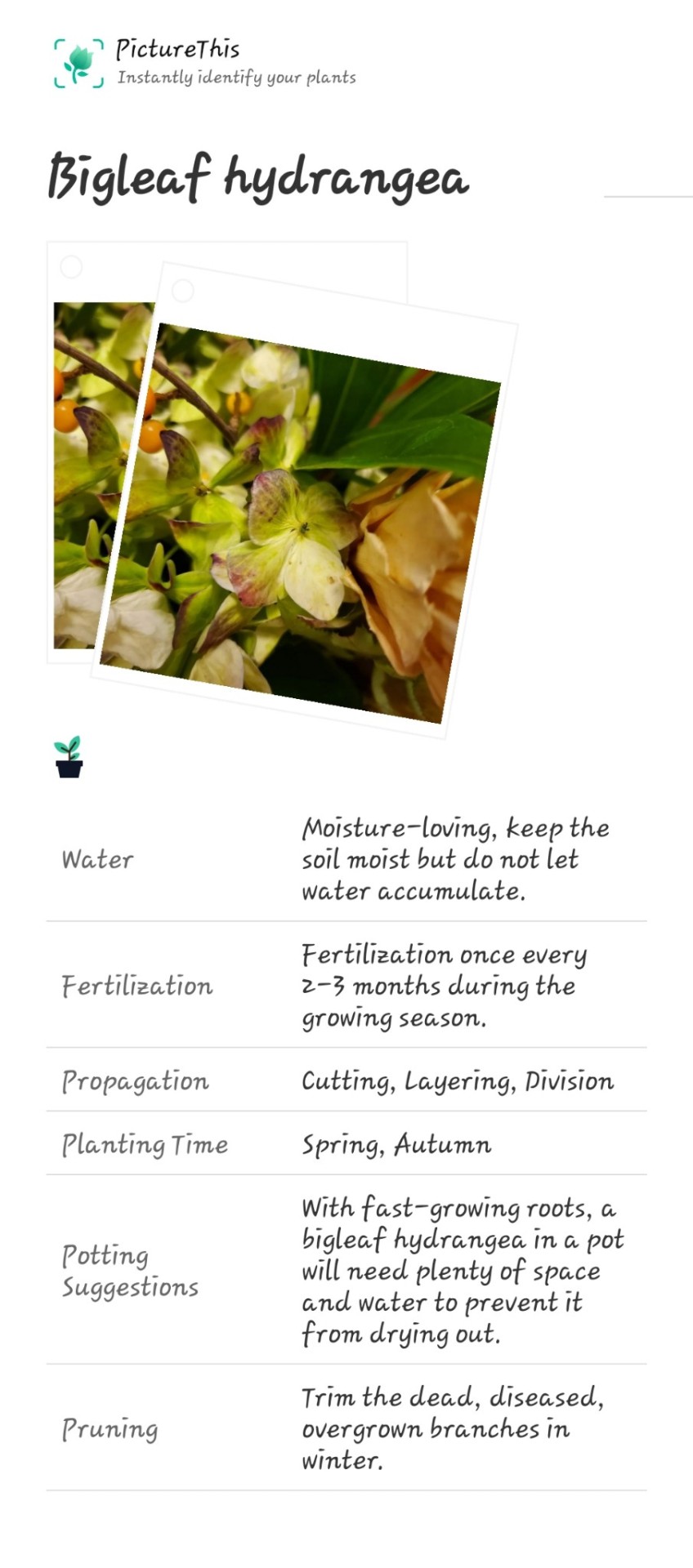
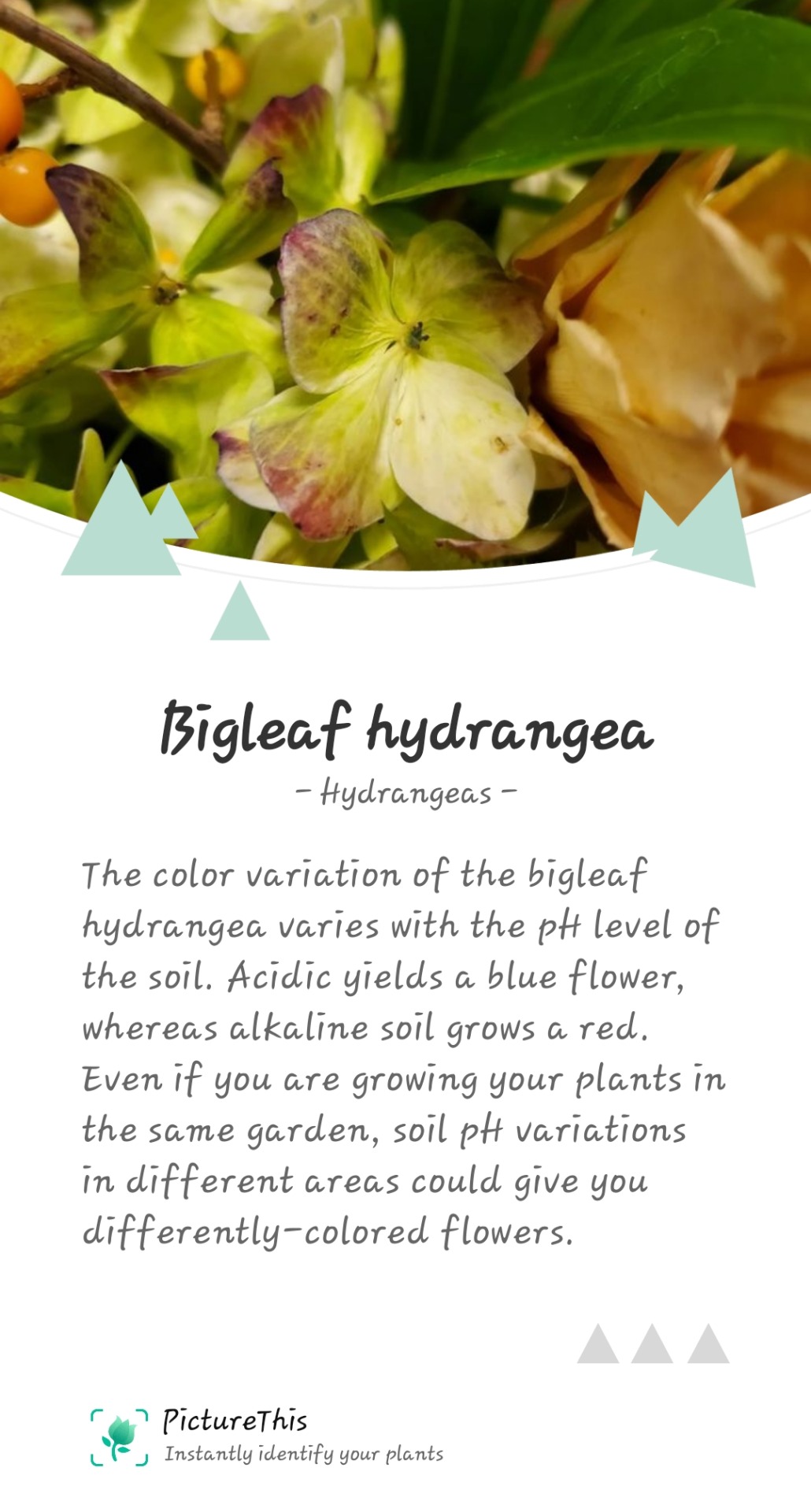
The big leaf hydrangea
Graphics by picture this / photography by me
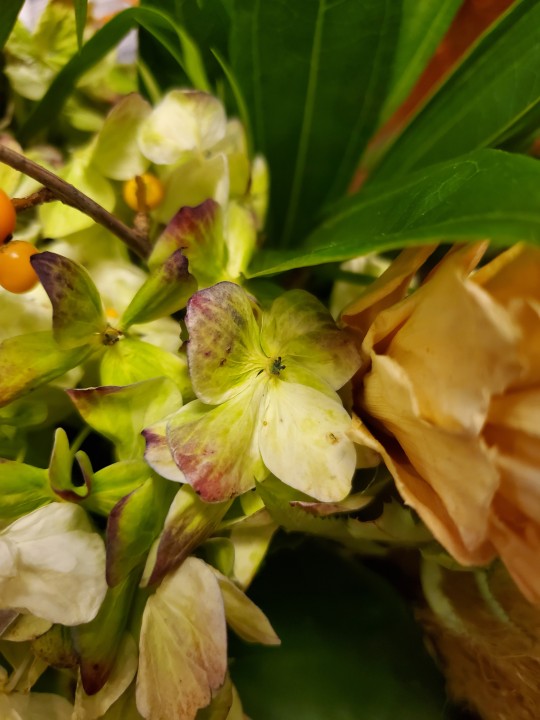
1 note
·
View note
Photo
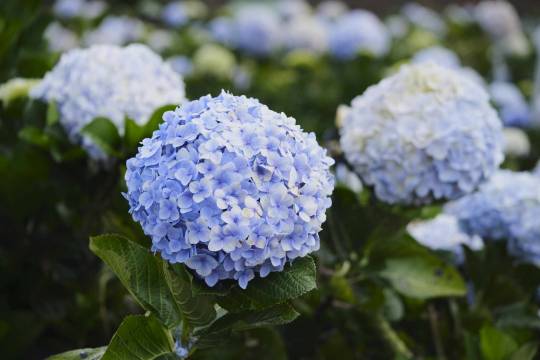
Common Name Bigleaf hydrangea, French hydrangea Botanical Name Hydrangea macrophylla Family Hydrangeaceae Plant Type Shrub Mature Size 3-6 ft. tall and wide Sun Exposure Partial, shade Soil Type Loamy, sandy, clay, moist but well-drained Soil pH Acidic to neutral Bloom Time Summer Flower Color Pink, blue, purple, white Hardiness Zones 4-9 (USDA) Native Area Asia Toxicity Toxic to humans and pets Bigleaf Hydrangea Care tab1962 / Getty Images Here are the main care requirements for growing a bigleaf hydrangea: Plant in a location with dappled or partial sun and rich, well-drained soil.Water whenever the top layer of soil feels dry.Fertilize once a year in the spring.Prune only moderately, and do it promptly after flowering.Mulch around the base to insulate the roots against winter cold. Want more gardening tips? Sign up for our free gardening newsletter for our best growing tips, troubleshooting hacks, and more! Planting Plant in summer or fall when the weather is cooler. Dig a hole about twice the width of the nursery container and just deep enough to fit the root ball so the plant sits at the same level or a bit higher than in the container. Backfill with soil and tamp down the soil. Water deeply to get rid of any air pockets. If you plant more than one, space the hydrangeas about five feet apart. Light The warmer your climate, the more protection your hydrangea needs from the sun. Dappled sunlight or partial shade—preferably with morning sun and afternoon shade—are ideal. Deep shade, on the other hand, is not advisable, as it leads to weak stems and reduced bloom. Soil The soil should be organically rich and moist but well-drained. The soil pH determines the flower color, and it is possible to amend the soil pH to obtain the desired flower color. Water If the top few inches of soil feel dry, water slowly and deeply. Always water the shrub at its base, not from overhead. Temperature and Humidity The hardiness of bigleaf hydrangeas varies; some, such as endless summer hydrangeas, have excellent winter hardiness and withstand winter temperatures as low as -30°F. Generally, bigleaf hydrangeas are better suited for moderately warm climates with average humidity than for hot, arid climates. Fertilizer Fertilize bigleaf hydrangea only in the spring just as new growth starts with a slow-release, balanced fertilizer. Pruning Bigleaf hydrangea does not need much pruning, only to remove dead or diseased stems or to improve the airflow inside the plant, which prevents the spread of fungal diseases. The key to correctly pruning hydrangeas is to know if they bloom on this year's growth (new wood) or last year's growth (old wood). Most bigleaf hydrangeas bloom on old wood, but some varieties, such as Penny Mac hydrangeas, bloom on both old and new wood. Pruning should be done immediately after flowering. Propagating Bigleaf Hydrangea The plants are easy to propagate by rooting stem cuttings or layering. Either method is best done in the spring or early summer so the cutting has time to root and can be planted in the fall. Rooting Stem Cuttings Take a 6- to 8-inch cutting without any flowers and at least one growth node. Strip off all the leaves from the lower half of the cutting. Dip the end of the cutting into rooting hormone. Fill a four-inch pot with moist potting mix. Poke a hole in the soil with a pencil and insert the cutting in the soil deep enough so that the growth node is buried in the soil. Tamp down the soil around the stem. Place the pot in a bright, warm location away from direct sunlight. Keep the soil evenly moist until roots form. Layering a Stem Find a stem that is bent or grows as close to the ground as possible.Look for a node or nodes on that stem and scrape off a little of the bark around each node without damaging the node.Dig a trench about 2 inches deep and place the stem into it so that the node area sits in the trench but the end of the stem sticks out of the soil.Cover the stem about 2 inches deep with soil so that the nodes are fully covered. Secure the stem with a brick or a garden staple so it remains buried.Keep the area moist. Once the stem has grown into a vigorous little plant with plenty of roots (carefully check to make sure), cut the stem off the mother plant and move it to a new location or pot it up. Potting and Repotting Bigleaf Hydrangea cmspic / Getty Images For potting, select a dwarf variety such as 'Wee Bit Grumpy,' which only grows 24 inches tall and 30 inches wide at maturity. Bigleaf hydrangeas need containers with large drainage holes and well-draining potting mix. When the roots emerge from the drain holes or the plant becomes root-bound, repot it in a container one size up with fresh potting mix. Overwintering If planted in their hardiness range, winter protection is not required. However, a thick layer of mulch around the base helps to insulate the roots against the winter cold. How to Get Bigleaf Hydrangea to Bloom Photos by R A Kearton / Getty Images Failure of hydrangeas to bloom is often due to too much shade, accidentally removing flower buds by pruning at the wrong time of year, or a late spring frost after a period of warm weather that kills the flower buds. Additional fertilizer does not encourage more blooming. Instead, make sure that the plant is grown in suitable conditions. Aside from pruning promptly after the bloom is over, there is no other care necessary after blooming. Common Pests and Plant Diseases Bigleaf hydrangeas are prone to fungal and other diseases, including powdery mildew, bacterial wilt, blight, and leaf spot. If powdery mildew is an issue in your location, select a resistant variety, such as Bloomstruck. Several pests, including aphids, black vine weevils, four-lined plant bugs, Japanese beetles, and spider mites, are attracted to hydrangeas. Many of these pests can be managed with insecticidal soap. Common Problems If the leaves of your bigleaf hydrangea turn yellow, the cause may be overwatering, underwatering, or too much fertilizer. Other issues are drooping leaves in hot weather and browning leaves, which could indicate excess fertilizer or a fungal or bacterial disease. FAQ Bigleaf hydrangeas need both sun, preferably in the morning, and shade, ideally in the hot afternoon hours, to grow. Bigleaf hydrangeas require only minimal pruning to remove broken or dead stems or to improve airflow, not to prune the shrub into shape. Size varies depending on the cultivar, but bigleaf hydrangeas rarely exceed six feet in height and width when mature. Source link
0 notes
Photo
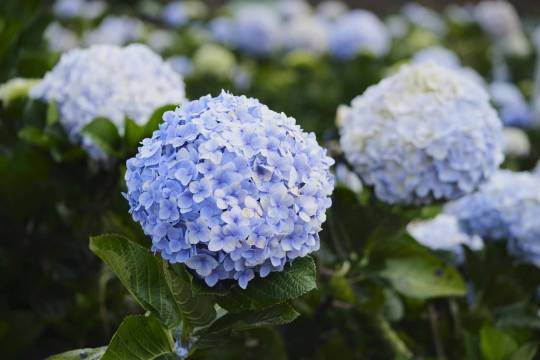
Common Name Bigleaf hydrangea, French hydrangea Botanical Name Hydrangea macrophylla Family Hydrangeaceae Plant Type Shrub Mature Size 3-6 ft. tall and wide Sun Exposure Partial, shade Soil Type Loamy, sandy, clay, moist but well-drained Soil pH Acidic to neutral Bloom Time Summer Flower Color Pink, blue, purple, white Hardiness Zones 4-9 (USDA) Native Area Asia Toxicity Toxic to humans and pets Bigleaf Hydrangea Care tab1962 / Getty Images Here are the main care requirements for growing a bigleaf hydrangea: Plant in a location with dappled or partial sun and rich, well-drained soil.Water whenever the top layer of soil feels dry.Fertilize once a year in the spring.Prune only moderately, and do it promptly after flowering.Mulch around the base to insulate the roots against winter cold. Want more gardening tips? Sign up for our free gardening newsletter for our best growing tips, troubleshooting hacks, and more! Planting Plant in summer or fall when the weather is cooler. Dig a hole about twice the width of the nursery container and just deep enough to fit the root ball so the plant sits at the same level or a bit higher than in the container. Backfill with soil and tamp down the soil. Water deeply to get rid of any air pockets. If you plant more than one, space the hydrangeas about five feet apart. Light The warmer your climate, the more protection your hydrangea needs from the sun. Dappled sunlight or partial shade—preferably with morning sun and afternoon shade—are ideal. Deep shade, on the other hand, is not advisable, as it leads to weak stems and reduced bloom. Soil The soil should be organically rich and moist but well-drained. The soil pH determines the flower color, and it is possible to amend the soil pH to obtain the desired flower color. Water If the top few inches of soil feel dry, water slowly and deeply. Always water the shrub at its base, not from overhead. Temperature and Humidity The hardiness of bigleaf hydrangeas varies; some, such as endless summer hydrangeas, have excellent winter hardiness and withstand winter temperatures as low as -30°F. Generally, bigleaf hydrangeas are better suited for moderately warm climates with average humidity than for hot, arid climates. Fertilizer Fertilize bigleaf hydrangea only in the spring just as new growth starts with a slow-release, balanced fertilizer. Pruning Bigleaf hydrangea does not need much pruning, only to remove dead or diseased stems or to improve the airflow inside the plant, which prevents the spread of fungal diseases. The key to correctly pruning hydrangeas is to know if they bloom on this year's growth (new wood) or last year's growth (old wood). Most bigleaf hydrangeas bloom on old wood, but some varieties, such as Penny Mac hydrangeas, bloom on both old and new wood. Pruning should be done immediately after flowering. Propagating Bigleaf Hydrangea The plants are easy to propagate by rooting stem cuttings or layering. Either method is best done in the spring or early summer so the cutting has time to root and can be planted in the fall. Rooting Stem Cuttings Take a 6- to 8-inch cutting without any flowers and at least one growth node. Strip off all the leaves from the lower half of the cutting. Dip the end of the cutting into rooting hormone. Fill a four-inch pot with moist potting mix. Poke a hole in the soil with a pencil and insert the cutting in the soil deep enough so that the growth node is buried in the soil. Tamp down the soil around the stem. Place the pot in a bright, warm location away from direct sunlight. Keep the soil evenly moist until roots form. Layering a Stem Find a stem that is bent or grows as close to the ground as possible.Look for a node or nodes on that stem and scrape off a little of the bark around each node without damaging the node.Dig a trench about 2 inches deep and place the stem into it so that the node area sits in the trench but the end of the stem sticks out of the soil.Cover the stem about 2 inches deep with soil so that the nodes are fully covered. Secure the stem with a brick or a garden staple so it remains buried.Keep the area moist. Once the stem has grown into a vigorous little plant with plenty of roots (carefully check to make sure), cut the stem off the mother plant and move it to a new location or pot it up. Potting and Repotting Bigleaf Hydrangea cmspic / Getty Images For potting, select a dwarf variety such as 'Wee Bit Grumpy,' which only grows 24 inches tall and 30 inches wide at maturity. Bigleaf hydrangeas need containers with large drainage holes and well-draining potting mix. When the roots emerge from the drain holes or the plant becomes root-bound, repot it in a container one size up with fresh potting mix. Overwintering If planted in their hardiness range, winter protection is not required. However, a thick layer of mulch around the base helps to insulate the roots against the winter cold. How to Get Bigleaf Hydrangea to Bloom Photos by R A Kearton / Getty Images Failure of hydrangeas to bloom is often due to too much shade, accidentally removing flower buds by pruning at the wrong time of year, or a late spring frost after a period of warm weather that kills the flower buds. Additional fertilizer does not encourage more blooming. Instead, make sure that the plant is grown in suitable conditions. Aside from pruning promptly after the bloom is over, there is no other care necessary after blooming. Common Pests and Plant Diseases Bigleaf hydrangeas are prone to fungal and other diseases, including powdery mildew, bacterial wilt, blight, and leaf spot. If powdery mildew is an issue in your location, select a resistant variety, such as Bloomstruck. Several pests, including aphids, black vine weevils, four-lined plant bugs, Japanese beetles, and spider mites, are attracted to hydrangeas. Many of these pests can be managed with insecticidal soap. Common Problems If the leaves of your bigleaf hydrangea turn yellow, the cause may be overwatering, underwatering, or too much fertilizer. Other issues are drooping leaves in hot weather and browning leaves, which could indicate excess fertilizer or a fungal or bacterial disease. FAQ Bigleaf hydrangeas need both sun, preferably in the morning, and shade, ideally in the hot afternoon hours, to grow. Bigleaf hydrangeas require only minimal pruning to remove broken or dead stems or to improve airflow, not to prune the shrub into shape. Size varies depending on the cultivar, but bigleaf hydrangeas rarely exceed six feet in height and width when mature. Source link
0 notes
Photo

Common Name Bigleaf hydrangea, French hydrangea Botanical Name Hydrangea macrophylla Family Hydrangeaceae Plant Type Shrub Mature Size 3-6 ft. tall and wide Sun Exposure Partial, shade Soil Type Loamy, sandy, clay, moist but well-drained Soil pH Acidic to neutral Bloom Time Summer Flower Color Pink, blue, purple, white Hardiness Zones 4-9 (USDA) Native Area Asia Toxicity Toxic to humans and pets Bigleaf Hydrangea Care tab1962 / Getty Images Here are the main care requirements for growing a bigleaf hydrangea: Plant in a location with dappled or partial sun and rich, well-drained soil.Water whenever the top layer of soil feels dry.Fertilize once a year in the spring.Prune only moderately, and do it promptly after flowering.Mulch around the base to insulate the roots against winter cold. Want more gardening tips? Sign up for our free gardening newsletter for our best growing tips, troubleshooting hacks, and more! Planting Plant in summer or fall when the weather is cooler. Dig a hole about twice the width of the nursery container and just deep enough to fit the root ball so the plant sits at the same level or a bit higher than in the container. Backfill with soil and tamp down the soil. Water deeply to get rid of any air pockets. If you plant more than one, space the hydrangeas about five feet apart. Light The warmer your climate, the more protection your hydrangea needs from the sun. Dappled sunlight or partial shade—preferably with morning sun and afternoon shade—are ideal. Deep shade, on the other hand, is not advisable, as it leads to weak stems and reduced bloom. Soil The soil should be organically rich and moist but well-drained. The soil pH determines the flower color, and it is possible to amend the soil pH to obtain the desired flower color. Water If the top few inches of soil feel dry, water slowly and deeply. Always water the shrub at its base, not from overhead. Temperature and Humidity The hardiness of bigleaf hydrangeas varies; some, such as endless summer hydrangeas, have excellent winter hardiness and withstand winter temperatures as low as -30°F. Generally, bigleaf hydrangeas are better suited for moderately warm climates with average humidity than for hot, arid climates. Fertilizer Fertilize bigleaf hydrangea only in the spring just as new growth starts with a slow-release, balanced fertilizer. Pruning Bigleaf hydrangea does not need much pruning, only to remove dead or diseased stems or to improve the airflow inside the plant, which prevents the spread of fungal diseases. The key to correctly pruning hydrangeas is to know if they bloom on this year's growth (new wood) or last year's growth (old wood). Most bigleaf hydrangeas bloom on old wood, but some varieties, such as Penny Mac hydrangeas, bloom on both old and new wood. Pruning should be done immediately after flowering. Propagating Bigleaf Hydrangea The plants are easy to propagate by rooting stem cuttings or layering. Either method is best done in the spring or early summer so the cutting has time to root and can be planted in the fall. Rooting Stem Cuttings Take a 6- to 8-inch cutting without any flowers and at least one growth node. Strip off all the leaves from the lower half of the cutting. Dip the end of the cutting into rooting hormone. Fill a four-inch pot with moist potting mix. Poke a hole in the soil with a pencil and insert the cutting in the soil deep enough so that the growth node is buried in the soil. Tamp down the soil around the stem. Place the pot in a bright, warm location away from direct sunlight. Keep the soil evenly moist until roots form. Layering a Stem Find a stem that is bent or grows as close to the ground as possible.Look for a node or nodes on that stem and scrape off a little of the bark around each node without damaging the node.Dig a trench about 2 inches deep and place the stem into it so that the node area sits in the trench but the end of the stem sticks out of the soil.Cover the stem about 2 inches deep with soil so that the nodes are fully covered. Secure the stem with a brick or a garden staple so it remains buried.Keep the area moist. Once the stem has grown into a vigorous little plant with plenty of roots (carefully check to make sure), cut the stem off the mother plant and move it to a new location or pot it up. Potting and Repotting Bigleaf Hydrangea cmspic / Getty Images For potting, select a dwarf variety such as 'Wee Bit Grumpy,' which only grows 24 inches tall and 30 inches wide at maturity. Bigleaf hydrangeas need containers with large drainage holes and well-draining potting mix. When the roots emerge from the drain holes or the plant becomes root-bound, repot it in a container one size up with fresh potting mix. Overwintering If planted in their hardiness range, winter protection is not required. However, a thick layer of mulch around the base helps to insulate the roots against the winter cold. How to Get Bigleaf Hydrangea to Bloom Photos by R A Kearton / Getty Images Failure of hydrangeas to bloom is often due to too much shade, accidentally removing flower buds by pruning at the wrong time of year, or a late spring frost after a period of warm weather that kills the flower buds. Additional fertilizer does not encourage more blooming. Instead, make sure that the plant is grown in suitable conditions. Aside from pruning promptly after the bloom is over, there is no other care necessary after blooming. Common Pests and Plant Diseases Bigleaf hydrangeas are prone to fungal and other diseases, including powdery mildew, bacterial wilt, blight, and leaf spot. If powdery mildew is an issue in your location, select a resistant variety, such as Bloomstruck. Several pests, including aphids, black vine weevils, four-lined plant bugs, Japanese beetles, and spider mites, are attracted to hydrangeas. Many of these pests can be managed with insecticidal soap. Common Problems If the leaves of your bigleaf hydrangea turn yellow, the cause may be overwatering, underwatering, or too much fertilizer. Other issues are drooping leaves in hot weather and browning leaves, which could indicate excess fertilizer or a fungal or bacterial disease. FAQ Bigleaf hydrangeas need both sun, preferably in the morning, and shade, ideally in the hot afternoon hours, to grow. Bigleaf hydrangeas require only minimal pruning to remove broken or dead stems or to improve airflow, not to prune the shrub into shape. Size varies depending on the cultivar, but bigleaf hydrangeas rarely exceed six feet in height and width when mature. Source link
0 notes
Text

Bigleaf hydrangea
#nature#photography#nature photography#flowers#summer#summer flowers#floral#pink flowers#hydrangea#hydrangeas#bigleaf hydrangea
51 notes
·
View notes
Photo
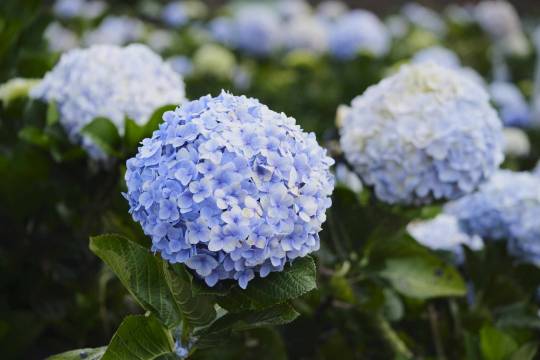
Common Name Bigleaf hydrangea, French hydrangea Botanical Name Hydrangea macrophylla Family Hydrangeaceae Plant Type Shrub Mature Size 3-6 ft. tall and wide Sun Exposure Partial, shade Soil Type Loamy, sandy, clay, moist but well-drained Soil pH Acidic to neutral Bloom Time Summer Flower Color Pink, blue, purple, white Hardiness Zones 4-9 (USDA) Native Area Asia Toxicity Toxic to humans and pets Bigleaf Hydrangea Care tab1962 / Getty Images Here are the main care requirements for growing a bigleaf hydrangea: Plant in a location with dappled or partial sun and rich, well-drained soil.Water whenever the top layer of soil feels dry.Fertilize once a year in the spring.Prune only moderately, and do it promptly after flowering.Mulch around the base to insulate the roots against winter cold. Want more gardening tips? Sign up for our free gardening newsletter for our best growing tips, troubleshooting hacks, and more! Planting Plant in summer or fall when the weather is cooler. Dig a hole about twice the width of the nursery container and just deep enough to fit the root ball so the plant sits at the same level or a bit higher than in the container. Backfill with soil and tamp down the soil. Water deeply to get rid of any air pockets. If you plant more than one, space the hydrangeas about five feet apart. Light The warmer your climate, the more protection your hydrangea needs from the sun. Dappled sunlight or partial shade—preferably with morning sun and afternoon shade—are ideal. Deep shade, on the other hand, is not advisable, as it leads to weak stems and reduced bloom. Soil The soil should be organically rich and moist but well-drained. The soil pH determines the flower color, and it is possible to amend the soil pH to obtain the desired flower color. Water If the top few inches of soil feel dry, water slowly and deeply. Always water the shrub at its base, not from overhead. Temperature and Humidity The hardiness of bigleaf hydrangeas varies; some, such as endless summer hydrangeas, have excellent winter hardiness and withstand winter temperatures as low as -30°F. Generally, bigleaf hydrangeas are better suited for moderately warm climates with average humidity than for hot, arid climates. Fertilizer Fertilize bigleaf hydrangea only in the spring just as new growth starts with a slow-release, balanced fertilizer. Pruning Bigleaf hydrangea does not need much pruning, only to remove dead or diseased stems or to improve the airflow inside the plant, which prevents the spread of fungal diseases. The key to correctly pruning hydrangeas is to know if they bloom on this year's growth (new wood) or last year's growth (old wood). Most bigleaf hydrangeas bloom on old wood, but some varieties, such as Penny Mac hydrangeas, bloom on both old and new wood. Pruning should be done immediately after flowering. Propagating Bigleaf Hydrangea The plants are easy to propagate by rooting stem cuttings or layering. Either method is best done in the spring or early summer so the cutting has time to root and can be planted in the fall. Rooting Stem Cuttings Take a 6- to 8-inch cutting without any flowers and at least one growth node. Strip off all the leaves from the lower half of the cutting. Dip the end of the cutting into rooting hormone. Fill a four-inch pot with moist potting mix. Poke a hole in the soil with a pencil and insert the cutting in the soil deep enough so that the growth node is buried in the soil. Tamp down the soil around the stem. Place the pot in a bright, warm location away from direct sunlight. Keep the soil evenly moist until roots form. Layering a Stem Find a stem that is bent or grows as close to the ground as possible.Look for a node or nodes on that stem and scrape off a little of the bark around each node without damaging the node.Dig a trench about 2 inches deep and place the stem into it so that the node area sits in the trench but the end of the stem sticks out of the soil.Cover the stem about 2 inches deep with soil so that the nodes are fully covered. Secure the stem with a brick or a garden staple so it remains buried.Keep the area moist. Once the stem has grown into a vigorous little plant with plenty of roots (carefully check to make sure), cut the stem off the mother plant and move it to a new location or pot it up. Potting and Repotting Bigleaf Hydrangea cmspic / Getty Images For potting, select a dwarf variety such as 'Wee Bit Grumpy,' which only grows 24 inches tall and 30 inches wide at maturity. Bigleaf hydrangeas need containers with large drainage holes and well-draining potting mix. When the roots emerge from the drain holes or the plant becomes root-bound, repot it in a container one size up with fresh potting mix. Overwintering If planted in their hardiness range, winter protection is not required. However, a thick layer of mulch around the base helps to insulate the roots against the winter cold. How to Get Bigleaf Hydrangea to Bloom Photos by R A Kearton / Getty Images Failure of hydrangeas to bloom is often due to too much shade, accidentally removing flower buds by pruning at the wrong time of year, or a late spring frost after a period of warm weather that kills the flower buds. Additional fertilizer does not encourage more blooming. Instead, make sure that the plant is grown in suitable conditions. Aside from pruning promptly after the bloom is over, there is no other care necessary after blooming. Common Pests and Plant Diseases Bigleaf hydrangeas are prone to fungal and other diseases, including powdery mildew, bacterial wilt, blight, and leaf spot. If powdery mildew is an issue in your location, select a resistant variety, such as Bloomstruck. Several pests, including aphids, black vine weevils, four-lined plant bugs, Japanese beetles, and spider mites, are attracted to hydrangeas. Many of these pests can be managed with insecticidal soap. Common Problems If the leaves of your bigleaf hydrangea turn yellow, the cause may be overwatering, underwatering, or too much fertilizer. Other issues are drooping leaves in hot weather and browning leaves, which could indicate excess fertilizer or a fungal or bacterial disease. FAQ Bigleaf hydrangeas need both sun, preferably in the morning, and shade, ideally in the hot afternoon hours, to grow. Bigleaf hydrangeas require only minimal pruning to remove broken or dead stems or to improve airflow, not to prune the shrub into shape. Size varies depending on the cultivar, but bigleaf hydrangeas rarely exceed six feet in height and width when mature. Source link
0 notes
Text

だいぶ赤くなったアジサイ(7月4日)
5 notes
·
View notes
Photo
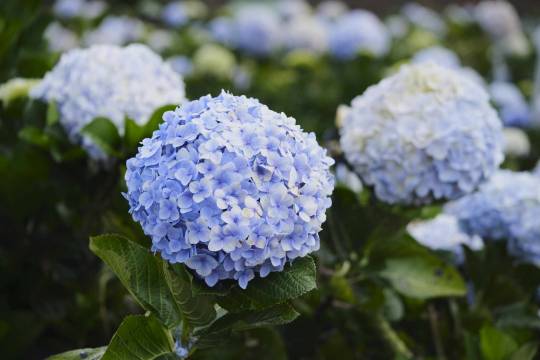
Common Name Bigleaf hydrangea, French hydrangea Botanical Name Hydrangea macrophylla Family Hydrangeaceae Plant Type Shrub Mature Size 3-6 ft. tall and wide Sun Exposure Partial, shade Soil Type Loamy, sandy, clay, moist but well-drained Soil pH Acidic to neutral Bloom Time Summer Flower Color Pink, blue, purple, white Hardiness Zones 4-9 (USDA) Native Area Asia Toxicity Toxic to humans and pets Bigleaf Hydrangea Care tab1962 / Getty Images Here are the main care requirements for growing a bigleaf hydrangea: Plant in a location with dappled or partial sun and rich, well-drained soil.Water whenever the top layer of soil feels dry.Fertilize once a year in the spring.Prune only moderately, and do it promptly after flowering.Mulch around the base to insulate the roots against winter cold. Want more gardening tips? Sign up for our free gardening newsletter for our best growing tips, troubleshooting hacks, and more! Planting Plant in summer or fall when the weather is cooler. Dig a hole about twice the width of the nursery container and just deep enough to fit the root ball so the plant sits at the same level or a bit higher than in the container. Backfill with soil and tamp down the soil. Water deeply to get rid of any air pockets. If you plant more than one, space the hydrangeas about five feet apart. Light The warmer your climate, the more protection your hydrangea needs from the sun. Dappled sunlight or partial shade—preferably with morning sun and afternoon shade—are ideal. Deep shade, on the other hand, is not advisable, as it leads to weak stems and reduced bloom. Soil The soil should be organically rich and moist but well-drained. The soil pH determines the flower color, and it is possible to amend the soil pH to obtain the desired flower color. Water If the top few inches of soil feel dry, water slowly and deeply. Always water the shrub at its base, not from overhead. Temperature and Humidity The hardiness of bigleaf hydrangeas varies; some, such as endless summer hydrangeas, have excellent winter hardiness and withstand winter temperatures as low as -30°F. Generally, bigleaf hydrangeas are better suited for moderately warm climates with average humidity than for hot, arid climates. Fertilizer Fertilize bigleaf hydrangea only in the spring just as new growth starts with a slow-release, balanced fertilizer. Pruning Bigleaf hydrangea does not need much pruning, only to remove dead or diseased stems or to improve the airflow inside the plant, which prevents the spread of fungal diseases. The key to correctly pruning hydrangeas is to know if they bloom on this year's growth (new wood) or last year's growth (old wood). Most bigleaf hydrangeas bloom on old wood, but some varieties, such as Penny Mac hydrangeas, bloom on both old and new wood. Pruning should be done immediately after flowering. Propagating Bigleaf Hydrangea The plants are easy to propagate by rooting stem cuttings or layering. Either method is best done in the spring or early summer so the cutting has time to root and can be planted in the fall. Rooting Stem Cuttings Take a 6- to 8-inch cutting without any flowers and at least one growth node. Strip off all the leaves from the lower half of the cutting. Dip the end of the cutting into rooting hormone. Fill a four-inch pot with moist potting mix. Poke a hole in the soil with a pencil and insert the cutting in the soil deep enough so that the growth node is buried in the soil. Tamp down the soil around the stem. Place the pot in a bright, warm location away from direct sunlight. Keep the soil evenly moist until roots form. Layering a Stem Find a stem that is bent or grows as close to the ground as possible.Look for a node or nodes on that stem and scrape off a little of the bark around each node without damaging the node.Dig a trench about 2 inches deep and place the stem into it so that the node area sits in the trench but the end of the stem sticks out of the soil.Cover the stem about 2 inches deep with soil so that the nodes are fully covered. Secure the stem with a brick or a garden staple so it remains buried.Keep the area moist. Once the stem has grown into a vigorous little plant with plenty of roots (carefully check to make sure), cut the stem off the mother plant and move it to a new location or pot it up. Potting and Repotting Bigleaf Hydrangea cmspic / Getty Images For potting, select a dwarf variety such as 'Wee Bit Grumpy,' which only grows 24 inches tall and 30 inches wide at maturity. Bigleaf hydrangeas need containers with large drainage holes and well-draining potting mix. When the roots emerge from the drain holes or the plant becomes root-bound, repot it in a container one size up with fresh potting mix. Overwintering If planted in their hardiness range, winter protection is not required. However, a thick layer of mulch around the base helps to insulate the roots against the winter cold. How to Get Bigleaf Hydrangea to Bloom Photos by R A Kearton / Getty Images Failure of hydrangeas to bloom is often due to too much shade, accidentally removing flower buds by pruning at the wrong time of year, or a late spring frost after a period of warm weather that kills the flower buds. Additional fertilizer does not encourage more blooming. Instead, make sure that the plant is grown in suitable conditions. Aside from pruning promptly after the bloom is over, there is no other care necessary after blooming. Common Pests and Plant Diseases Bigleaf hydrangeas are prone to fungal and other diseases, including powdery mildew, bacterial wilt, blight, and leaf spot. If powdery mildew is an issue in your location, select a resistant variety, such as Bloomstruck. Several pests, including aphids, black vine weevils, four-lined plant bugs, Japanese beetles, and spider mites, are attracted to hydrangeas. Many of these pests can be managed with insecticidal soap. Common Problems If the leaves of your bigleaf hydrangea turn yellow, the cause may be overwatering, underwatering, or too much fertilizer. Other issues are drooping leaves in hot weather and browning leaves, which could indicate excess fertilizer or a fungal or bacterial disease. FAQ Bigleaf hydrangeas need both sun, preferably in the morning, and shade, ideally in the hot afternoon hours, to grow. Bigleaf hydrangeas require only minimal pruning to remove broken or dead stems or to improve airflow, not to prune the shrub into shape. Size varies depending on the cultivar, but bigleaf hydrangeas rarely exceed six feet in height and width when mature. Source link
0 notes
Photo
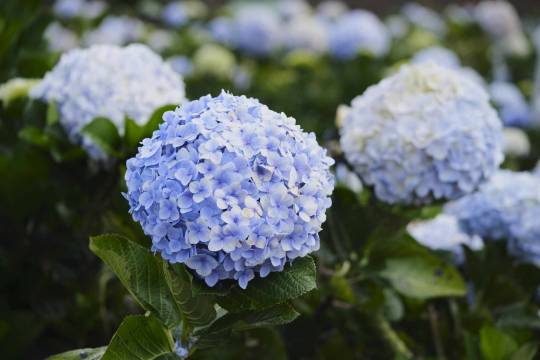
Common Name Bigleaf hydrangea, French hydrangea Botanical Name Hydrangea macrophylla Family Hydrangeaceae Plant Type Shrub Mature Size 3-6 ft. tall and wide Sun Exposure Partial, shade Soil Type Loamy, sandy, clay, moist but well-drained Soil pH Acidic to neutral Bloom Time Summer Flower Color Pink, blue, purple, white Hardiness Zones 4-9 (USDA) Native Area Asia Toxicity Toxic to humans and pets Bigleaf Hydrangea Care tab1962 / Getty Images Here are the main care requirements for growing a bigleaf hydrangea: Plant in a location with dappled or partial sun and rich, well-drained soil.Water whenever the top layer of soil feels dry.Fertilize once a year in the spring.Prune only moderately, and do it promptly after flowering.Mulch around the base to insulate the roots against winter cold. Want more gardening tips? Sign up for our free gardening newsletter for our best growing tips, troubleshooting hacks, and more! Planting Plant in summer or fall when the weather is cooler. Dig a hole about twice the width of the nursery container and just deep enough to fit the root ball so the plant sits at the same level or a bit higher than in the container. Backfill with soil and tamp down the soil. Water deeply to get rid of any air pockets. If you plant more than one, space the hydrangeas about five feet apart. Light The warmer your climate, the more protection your hydrangea needs from the sun. Dappled sunlight or partial shade—preferably with morning sun and afternoon shade—are ideal. Deep shade, on the other hand, is not advisable, as it leads to weak stems and reduced bloom. Soil The soil should be organically rich and moist but well-drained. The soil pH determines the flower color, and it is possible to amend the soil pH to obtain the desired flower color. Water If the top few inches of soil feel dry, water slowly and deeply. Always water the shrub at its base, not from overhead. Temperature and Humidity The hardiness of bigleaf hydrangeas varies; some, such as endless summer hydrangeas, have excellent winter hardiness and withstand winter temperatures as low as -30°F. Generally, bigleaf hydrangeas are better suited for moderately warm climates with average humidity than for hot, arid climates. Fertilizer Fertilize bigleaf hydrangea only in the spring just as new growth starts with a slow-release, balanced fertilizer. Pruning Bigleaf hydrangea does not need much pruning, only to remove dead or diseased stems or to improve the airflow inside the plant, which prevents the spread of fungal diseases. The key to correctly pruning hydrangeas is to know if they bloom on this year's growth (new wood) or last year's growth (old wood). Most bigleaf hydrangeas bloom on old wood, but some varieties, such as Penny Mac hydrangeas, bloom on both old and new wood. Pruning should be done immediately after flowering. Propagating Bigleaf Hydrangea The plants are easy to propagate by rooting stem cuttings or layering. Either method is best done in the spring or early summer so the cutting has time to root and can be planted in the fall. Rooting Stem Cuttings Take a 6- to 8-inch cutting without any flowers and at least one growth node. Strip off all the leaves from the lower half of the cutting. Dip the end of the cutting into rooting hormone. Fill a four-inch pot with moist potting mix. Poke a hole in the soil with a pencil and insert the cutting in the soil deep enough so that the growth node is buried in the soil. Tamp down the soil around the stem. Place the pot in a bright, warm location away from direct sunlight. Keep the soil evenly moist until roots form. Layering a Stem Find a stem that is bent or grows as close to the ground as possible.Look for a node or nodes on that stem and scrape off a little of the bark around each node without damaging the node.Dig a trench about 2 inches deep and place the stem into it so that the node area sits in the trench but the end of the stem sticks out of the soil.Cover the stem about 2 inches deep with soil so that the nodes are fully covered. Secure the stem with a brick or a garden staple so it remains buried.Keep the area moist. Once the stem has grown into a vigorous little plant with plenty of roots (carefully check to make sure), cut the stem off the mother plant and move it to a new location or pot it up. Potting and Repotting Bigleaf Hydrangea cmspic / Getty Images For potting, select a dwarf variety such as 'Wee Bit Grumpy,' which only grows 24 inches tall and 30 inches wide at maturity. Bigleaf hydrangeas need containers with large drainage holes and well-draining potting mix. When the roots emerge from the drain holes or the plant becomes root-bound, repot it in a container one size up with fresh potting mix. Overwintering If planted in their hardiness range, winter protection is not required. However, a thick layer of mulch around the base helps to insulate the roots against the winter cold. How to Get Bigleaf Hydrangea to Bloom Photos by R A Kearton / Getty Images Failure of hydrangeas to bloom is often due to too much shade, accidentally removing flower buds by pruning at the wrong time of year, or a late spring frost after a period of warm weather that kills the flower buds. Additional fertilizer does not encourage more blooming. Instead, make sure that the plant is grown in suitable conditions. Aside from pruning promptly after the bloom is over, there is no other care necessary after blooming. Common Pests and Plant Diseases Bigleaf hydrangeas are prone to fungal and other diseases, including powdery mildew, bacterial wilt, blight, and leaf spot. If powdery mildew is an issue in your location, select a resistant variety, such as Bloomstruck. Several pests, including aphids, black vine weevils, four-lined plant bugs, Japanese beetles, and spider mites, are attracted to hydrangeas. Many of these pests can be managed with insecticidal soap. Common Problems If the leaves of your bigleaf hydrangea turn yellow, the cause may be overwatering, underwatering, or too much fertilizer. Other issues are drooping leaves in hot weather and browning leaves, which could indicate excess fertilizer or a fungal or bacterial disease. FAQ Bigleaf hydrangeas need both sun, preferably in the morning, and shade, ideally in the hot afternoon hours, to grow. Bigleaf hydrangeas require only minimal pruning to remove broken or dead stems or to improve airflow, not to prune the shrub into shape. Size varies depending on the cultivar, but bigleaf hydrangeas rarely exceed six feet in height and width when mature. Source link
0 notes
Photo
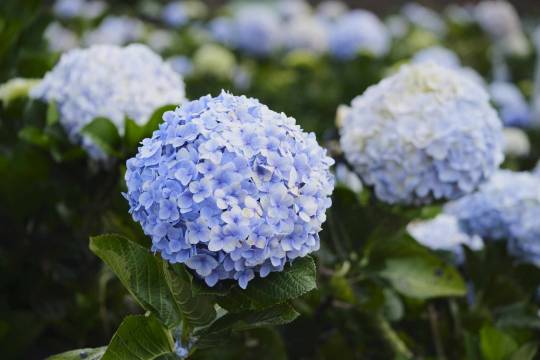
Common Name Bigleaf hydrangea, French hydrangea Botanical Name Hydrangea macrophylla Family Hydrangeaceae Plant Type Shrub Mature Size 3-6 ft. tall and wide Sun Exposure Partial, shade Soil Type Loamy, sandy, clay, moist but well-drained Soil pH Acidic to neutral Bloom Time Summer Flower Color Pink, blue, purple, white Hardiness Zones 4-9 (USDA) Native Area Asia Toxicity Toxic to humans and pets Bigleaf Hydrangea Care tab1962 / Getty Images Here are the main care requirements for growing a bigleaf hydrangea: Plant in a location with dappled or partial sun and rich, well-drained soil.Water whenever the top layer of soil feels dry.Fertilize once a year in the spring.Prune only moderately, and do it promptly after flowering.Mulch around the base to insulate the roots against winter cold. Want more gardening tips? Sign up for our free gardening newsletter for our best growing tips, troubleshooting hacks, and more! Planting Plant in summer or fall when the weather is cooler. Dig a hole about twice the width of the nursery container and just deep enough to fit the root ball so the plant sits at the same level or a bit higher than in the container. Backfill with soil and tamp down the soil. Water deeply to get rid of any air pockets. If you plant more than one, space the hydrangeas about five feet apart. Light The warmer your climate, the more protection your hydrangea needs from the sun. Dappled sunlight or partial shade—preferably with morning sun and afternoon shade—are ideal. Deep shade, on the other hand, is not advisable, as it leads to weak stems and reduced bloom. Soil The soil should be organically rich and moist but well-drained. The soil pH determines the flower color, and it is possible to amend the soil pH to obtain the desired flower color. Water If the top few inches of soil feel dry, water slowly and deeply. Always water the shrub at its base, not from overhead. Temperature and Humidity The hardiness of bigleaf hydrangeas varies; some, such as endless summer hydrangeas, have excellent winter hardiness and withstand winter temperatures as low as -30°F. Generally, bigleaf hydrangeas are better suited for moderately warm climates with average humidity than for hot, arid climates. Fertilizer Fertilize bigleaf hydrangea only in the spring just as new growth starts with a slow-release, balanced fertilizer. Pruning Bigleaf hydrangea does not need much pruning, only to remove dead or diseased stems or to improve the airflow inside the plant, which prevents the spread of fungal diseases. The key to correctly pruning hydrangeas is to know if they bloom on this year's growth (new wood) or last year's growth (old wood). Most bigleaf hydrangeas bloom on old wood, but some varieties, such as Penny Mac hydrangeas, bloom on both old and new wood. Pruning should be done immediately after flowering. Propagating Bigleaf Hydrangea The plants are easy to propagate by rooting stem cuttings or layering. Either method is best done in the spring or early summer so the cutting has time to root and can be planted in the fall. Rooting Stem Cuttings Take a 6- to 8-inch cutting without any flowers and at least one growth node. Strip off all the leaves from the lower half of the cutting. Dip the end of the cutting into rooting hormone. Fill a four-inch pot with moist potting mix. Poke a hole in the soil with a pencil and insert the cutting in the soil deep enough so that the growth node is buried in the soil. Tamp down the soil around the stem. Place the pot in a bright, warm location away from direct sunlight. Keep the soil evenly moist until roots form. Layering a Stem Find a stem that is bent or grows as close to the ground as possible.Look for a node or nodes on that stem and scrape off a little of the bark around each node without damaging the node.Dig a trench about 2 inches deep and place the stem into it so that the node area sits in the trench but the end of the stem sticks out of the soil.Cover the stem about 2 inches deep with soil so that the nodes are fully covered. Secure the stem with a brick or a garden staple so it remains buried.Keep the area moist. Once the stem has grown into a vigorous little plant with plenty of roots (carefully check to make sure), cut the stem off the mother plant and move it to a new location or pot it up. Potting and Repotting Bigleaf Hydrangea cmspic / Getty Images For potting, select a dwarf variety such as 'Wee Bit Grumpy,' which only grows 24 inches tall and 30 inches wide at maturity. Bigleaf hydrangeas need containers with large drainage holes and well-draining potting mix. When the roots emerge from the drain holes or the plant becomes root-bound, repot it in a container one size up with fresh potting mix. Overwintering If planted in their hardiness range, winter protection is not required. However, a thick layer of mulch around the base helps to insulate the roots against the winter cold. How to Get Bigleaf Hydrangea to Bloom Photos by R A Kearton / Getty Images Failure of hydrangeas to bloom is often due to too much shade, accidentally removing flower buds by pruning at the wrong time of year, or a late spring frost after a period of warm weather that kills the flower buds. Additional fertilizer does not encourage more blooming. Instead, make sure that the plant is grown in suitable conditions. Aside from pruning promptly after the bloom is over, there is no other care necessary after blooming. Common Pests and Plant Diseases Bigleaf hydrangeas are prone to fungal and other diseases, including powdery mildew, bacterial wilt, blight, and leaf spot. If powdery mildew is an issue in your location, select a resistant variety, such as Bloomstruck. Several pests, including aphids, black vine weevils, four-lined plant bugs, Japanese beetles, and spider mites, are attracted to hydrangeas. Many of these pests can be managed with insecticidal soap. Common Problems If the leaves of your bigleaf hydrangea turn yellow, the cause may be overwatering, underwatering, or too much fertilizer. Other issues are drooping leaves in hot weather and browning leaves, which could indicate excess fertilizer or a fungal or bacterial disease. FAQ Bigleaf hydrangeas need both sun, preferably in the morning, and shade, ideally in the hot afternoon hours, to grow. Bigleaf hydrangeas require only minimal pruning to remove broken or dead stems or to improve airflow, not to prune the shrub into shape. Size varies depending on the cultivar, but bigleaf hydrangeas rarely exceed six feet in height and width when mature. Source link
0 notes
Photo
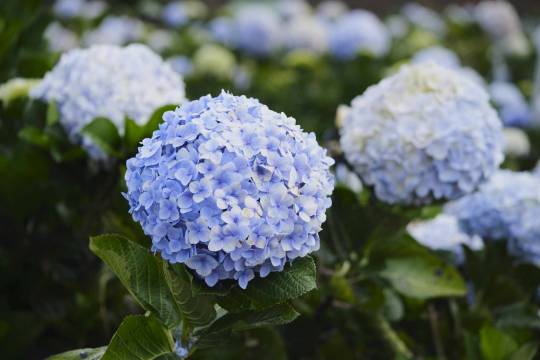
Common Name Bigleaf hydrangea, French hydrangea Botanical Name Hydrangea macrophylla Family Hydrangeaceae Plant Type Shrub Mature Size 3-6 ft. tall and wide Sun Exposure Partial, shade Soil Type Loamy, sandy, clay, moist but well-drained Soil pH Acidic to neutral Bloom Time Summer Flower Color Pink, blue, purple, white Hardiness Zones 4-9 (USDA) Native Area Asia Toxicity Toxic to humans and pets Bigleaf Hydrangea Care tab1962 / Getty Images Here are the main care requirements for growing a bigleaf hydrangea: Plant in a location with dappled or partial sun and rich, well-drained soil.Water whenever the top layer of soil feels dry.Fertilize once a year in the spring.Prune only moderately, and do it promptly after flowering.Mulch around the base to insulate the roots against winter cold. Want more gardening tips? Sign up for our free gardening newsletter for our best growing tips, troubleshooting hacks, and more! Planting Plant in summer or fall when the weather is cooler. Dig a hole about twice the width of the nursery container and just deep enough to fit the root ball so the plant sits at the same level or a bit higher than in the container. Backfill with soil and tamp down the soil. Water deeply to get rid of any air pockets. If you plant more than one, space the hydrangeas about five feet apart. Light The warmer your climate, the more protection your hydrangea needs from the sun. Dappled sunlight or partial shade—preferably with morning sun and afternoon shade—are ideal. Deep shade, on the other hand, is not advisable, as it leads to weak stems and reduced bloom. Soil The soil should be organically rich and moist but well-drained. The soil pH determines the flower color, and it is possible to amend the soil pH to obtain the desired flower color. Water If the top few inches of soil feel dry, water slowly and deeply. Always water the shrub at its base, not from overhead. Temperature and Humidity The hardiness of bigleaf hydrangeas varies; some, such as endless summer hydrangeas, have excellent winter hardiness and withstand winter temperatures as low as -30°F. Generally, bigleaf hydrangeas are better suited for moderately warm climates with average humidity than for hot, arid climates. Fertilizer Fertilize bigleaf hydrangea only in the spring just as new growth starts with a slow-release, balanced fertilizer. Pruning Bigleaf hydrangea does not need much pruning, only to remove dead or diseased stems or to improve the airflow inside the plant, which prevents the spread of fungal diseases. The key to correctly pruning hydrangeas is to know if they bloom on this year's growth (new wood) or last year's growth (old wood). Most bigleaf hydrangeas bloom on old wood, but some varieties, such as Penny Mac hydrangeas, bloom on both old and new wood. Pruning should be done immediately after flowering. Propagating Bigleaf Hydrangea The plants are easy to propagate by rooting stem cuttings or layering. Either method is best done in the spring or early summer so the cutting has time to root and can be planted in the fall. Rooting Stem Cuttings Take a 6- to 8-inch cutting without any flowers and at least one growth node. Strip off all the leaves from the lower half of the cutting. Dip the end of the cutting into rooting hormone. Fill a four-inch pot with moist potting mix. Poke a hole in the soil with a pencil and insert the cutting in the soil deep enough so that the growth node is buried in the soil. Tamp down the soil around the stem. Place the pot in a bright, warm location away from direct sunlight. Keep the soil evenly moist until roots form. Layering a Stem Find a stem that is bent or grows as close to the ground as possible.Look for a node or nodes on that stem and scrape off a little of the bark around each node without damaging the node.Dig a trench about 2 inches deep and place the stem into it so that the node area sits in the trench but the end of the stem sticks out of the soil.Cover the stem about 2 inches deep with soil so that the nodes are fully covered. Secure the stem with a brick or a garden staple so it remains buried.Keep the area moist. Once the stem has grown into a vigorous little plant with plenty of roots (carefully check to make sure), cut the stem off the mother plant and move it to a new location or pot it up. Potting and Repotting Bigleaf Hydrangea cmspic / Getty Images For potting, select a dwarf variety such as 'Wee Bit Grumpy,' which only grows 24 inches tall and 30 inches wide at maturity. Bigleaf hydrangeas need containers with large drainage holes and well-draining potting mix. When the roots emerge from the drain holes or the plant becomes root-bound, repot it in a container one size up with fresh potting mix. Overwintering If planted in their hardiness range, winter protection is not required. However, a thick layer of mulch around the base helps to insulate the roots against the winter cold. How to Get Bigleaf Hydrangea to Bloom Photos by R A Kearton / Getty Images Failure of hydrangeas to bloom is often due to too much shade, accidentally removing flower buds by pruning at the wrong time of year, or a late spring frost after a period of warm weather that kills the flower buds. Additional fertilizer does not encourage more blooming. Instead, make sure that the plant is grown in suitable conditions. Aside from pruning promptly after the bloom is over, there is no other care necessary after blooming. Common Pests and Plant Diseases Bigleaf hydrangeas are prone to fungal and other diseases, including powdery mildew, bacterial wilt, blight, and leaf spot. If powdery mildew is an issue in your location, select a resistant variety, such as Bloomstruck. Several pests, including aphids, black vine weevils, four-lined plant bugs, Japanese beetles, and spider mites, are attracted to hydrangeas. Many of these pests can be managed with insecticidal soap. Common Problems If the leaves of your bigleaf hydrangea turn yellow, the cause may be overwatering, underwatering, or too much fertilizer. Other issues are drooping leaves in hot weather and browning leaves, which could indicate excess fertilizer or a fungal or bacterial disease. FAQ Bigleaf hydrangeas need both sun, preferably in the morning, and shade, ideally in the hot afternoon hours, to grow. Bigleaf hydrangeas require only minimal pruning to remove broken or dead stems or to improve airflow, not to prune the shrub into shape. Size varies depending on the cultivar, but bigleaf hydrangeas rarely exceed six feet in height and width when mature. Source link
0 notes
Photo
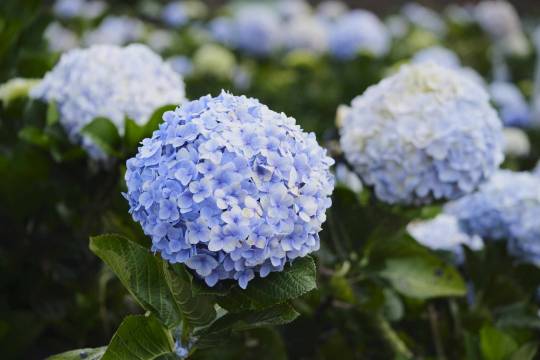
Common Name Bigleaf hydrangea, French hydrangea Botanical Name Hydrangea macrophylla Family Hydrangeaceae Plant Type Shrub Mature Size 3-6 ft. tall and wide Sun Exposure Partial, shade Soil Type Loamy, sandy, clay, moist but well-drained Soil pH Acidic to neutral Bloom Time Summer Flower Color Pink, blue, purple, white Hardiness Zones 4-9 (USDA) Native Area Asia Toxicity Toxic to humans and pets Bigleaf Hydrangea Care tab1962 / Getty Images Here are the main care requirements for growing a bigleaf hydrangea: Plant in a location with dappled or partial sun and rich, well-drained soil.Water whenever the top layer of soil feels dry.Fertilize once a year in the spring.Prune only moderately, and do it promptly after flowering.Mulch around the base to insulate the roots against winter cold. Want more gardening tips? Sign up for our free gardening newsletter for our best growing tips, troubleshooting hacks, and more! Planting Plant in summer or fall when the weather is cooler. Dig a hole about twice the width of the nursery container and just deep enough to fit the root ball so the plant sits at the same level or a bit higher than in the container. Backfill with soil and tamp down the soil. Water deeply to get rid of any air pockets. If you plant more than one, space the hydrangeas about five feet apart. Light The warmer your climate, the more protection your hydrangea needs from the sun. Dappled sunlight or partial shade—preferably with morning sun and afternoon shade—are ideal. Deep shade, on the other hand, is not advisable, as it leads to weak stems and reduced bloom. Soil The soil should be organically rich and moist but well-drained. The soil pH determines the flower color, and it is possible to amend the soil pH to obtain the desired flower color. Water If the top few inches of soil feel dry, water slowly and deeply. Always water the shrub at its base, not from overhead. Temperature and Humidity The hardiness of bigleaf hydrangeas varies; some, such as endless summer hydrangeas, have excellent winter hardiness and withstand winter temperatures as low as -30°F. Generally, bigleaf hydrangeas are better suited for moderately warm climates with average humidity than for hot, arid climates. Fertilizer Fertilize bigleaf hydrangea only in the spring just as new growth starts with a slow-release, balanced fertilizer. Pruning Bigleaf hydrangea does not need much pruning, only to remove dead or diseased stems or to improve the airflow inside the plant, which prevents the spread of fungal diseases. The key to correctly pruning hydrangeas is to know if they bloom on this year's growth (new wood) or last year's growth (old wood). Most bigleaf hydrangeas bloom on old wood, but some varieties, such as Penny Mac hydrangeas, bloom on both old and new wood. Pruning should be done immediately after flowering. Propagating Bigleaf Hydrangea The plants are easy to propagate by rooting stem cuttings or layering. Either method is best done in the spring or early summer so the cutting has time to root and can be planted in the fall. Rooting Stem Cuttings Take a 6- to 8-inch cutting without any flowers and at least one growth node. Strip off all the leaves from the lower half of the cutting. Dip the end of the cutting into rooting hormone. Fill a four-inch pot with moist potting mix. Poke a hole in the soil with a pencil and insert the cutting in the soil deep enough so that the growth node is buried in the soil. Tamp down the soil around the stem. Place the pot in a bright, warm location away from direct sunlight. Keep the soil evenly moist until roots form. Layering a Stem Find a stem that is bent or grows as close to the ground as possible.Look for a node or nodes on that stem and scrape off a little of the bark around each node without damaging the node.Dig a trench about 2 inches deep and place the stem into it so that the node area sits in the trench but the end of the stem sticks out of the soil.Cover the stem about 2 inches deep with soil so that the nodes are fully covered. Secure the stem with a brick or a garden staple so it remains buried.Keep the area moist. Once the stem has grown into a vigorous little plant with plenty of roots (carefully check to make sure), cut the stem off the mother plant and move it to a new location or pot it up. Potting and Repotting Bigleaf Hydrangea cmspic / Getty Images For potting, select a dwarf variety such as 'Wee Bit Grumpy,' which only grows 24 inches tall and 30 inches wide at maturity. Bigleaf hydrangeas need containers with large drainage holes and well-draining potting mix. When the roots emerge from the drain holes or the plant becomes root-bound, repot it in a container one size up with fresh potting mix. Overwintering If planted in their hardiness range, winter protection is not required. However, a thick layer of mulch around the base helps to insulate the roots against the winter cold. How to Get Bigleaf Hydrangea to Bloom Photos by R A Kearton / Getty Images Failure of hydrangeas to bloom is often due to too much shade, accidentally removing flower buds by pruning at the wrong time of year, or a late spring frost after a period of warm weather that kills the flower buds. Additional fertilizer does not encourage more blooming. Instead, make sure that the plant is grown in suitable conditions. Aside from pruning promptly after the bloom is over, there is no other care necessary after blooming. Common Pests and Plant Diseases Bigleaf hydrangeas are prone to fungal and other diseases, including powdery mildew, bacterial wilt, blight, and leaf spot. If powdery mildew is an issue in your location, select a resistant variety, such as Bloomstruck. Several pests, including aphids, black vine weevils, four-lined plant bugs, Japanese beetles, and spider mites, are attracted to hydrangeas. Many of these pests can be managed with insecticidal soap. Common Problems If the leaves of your bigleaf hydrangea turn yellow, the cause may be overwatering, underwatering, or too much fertilizer. Other issues are drooping leaves in hot weather and browning leaves, which could indicate excess fertilizer or a fungal or bacterial disease. FAQ Bigleaf hydrangeas need both sun, preferably in the morning, and shade, ideally in the hot afternoon hours, to grow. Bigleaf hydrangeas require only minimal pruning to remove broken or dead stems or to improve airflow, not to prune the shrub into shape. Size varies depending on the cultivar, but bigleaf hydrangeas rarely exceed six feet in height and width when mature. Source link
0 notes